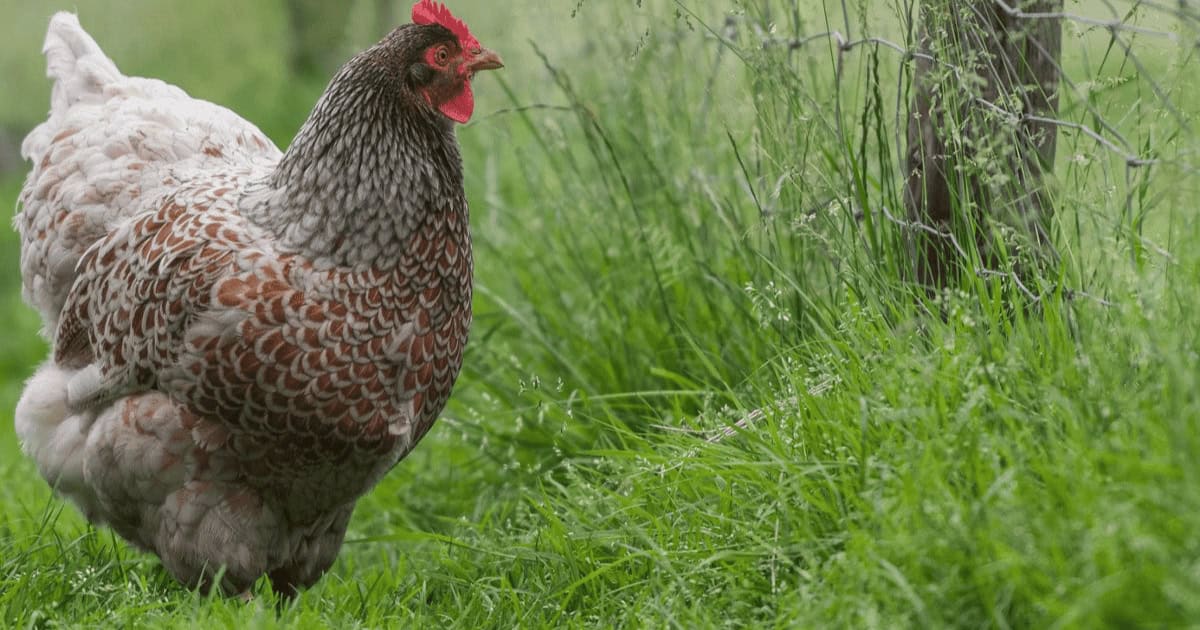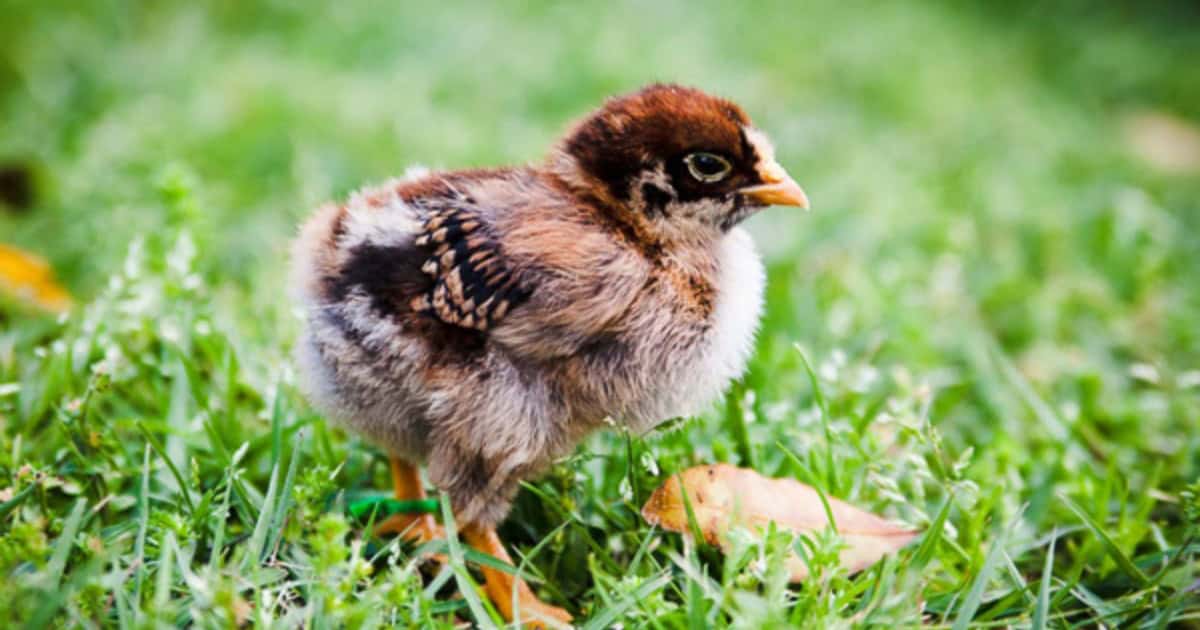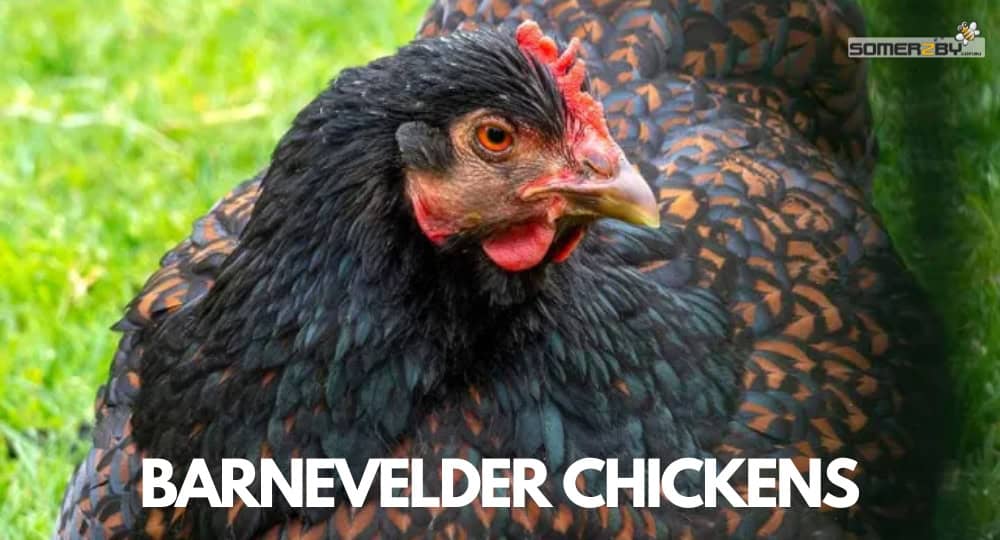Chickens, Info Guides
Barnevelder Chickens – A Comprehensive Guide
Barnevelder Chicken Breed
The Barnevelder breed is not as common as other breeds of chicken, but its popularity in Australia has been slowly growing.
Barnevelder chickens are friendly, low maintenance and reliable egg layers. If you are looking for a backyard pet to raise, this might be the perfect breed for you. Here’s what you need to know…
Breed Profile
Affectionately known as ‘Barnies’, Barnevelders are most commonly kept as backyard pets. They are a dual purpose breed, meaning they can be farmed for their eggs or meat.
Breed History
The Barnevelder was developed in the Netherlands in 1891. They are named after the Dutch town of Barneveld, which specialised in producing both poultry and eggs. The Dutch supplied to countries all across Europe.
At the time, brown eggs were in demand in England. It is believed that Dutch fowl producers in Barneveld created the Barnevelder to meet this demand.
While they are a newer breed, it is not well documented what breeds they are made up from.
They are believed to be developed by cross breeding Langshans, Brahmas, Malays, Gold Laced Wyandottes and other fowl from Asia.
The breed became officially recognized in the Netherlands in 1923.
Appearance
Barnevelders have a compact, rectangular body with a U-shaped back and high set tail. They have tight, soft plumage.

Barnevelder Appearance
They have red combs, wattles and ear lobes with yellow legs.
They have a single comb which is small with five points. Their comb, wattles and ear lobes are all red. Their legs and skin are yellow. Their beak is light brown and their eyes are bay.
Size
Barnevelder fowl come in two sizes – standard and bantam.
Standard Barnevelders are a large breed, making them suitable dual purpose birds. Hens weigh around 2.5kg while males weigh around 3.5kg.
The bantam Barnevelder is smaller. Bantam hens weigh around 800g and bantam males around 1kg. Bantams are less common than the standard variety and therefore can cost more to purchase.
Colours
Barnevelder chickens come in a wide variety of colours and patterns.
The first Barnevelders had double laced feathers. This is now the most common variety.
Laced bird feathers have a different colour around the edge of the feather. Double lacing means there are two layers of different colours. This gives them a unique and impressive pattern.
These birds will often have plain necks without any pattern. Hens will usually have much more detailed patterns than roosters.
Double Laced Barnevelder:
Sometimes referred to as Double Laced Gold, they are black with mahogany edging. This variety is very common.
Double Laced Blue Barnevelder:
Double Laced Blue Barnevelders have reddish-brown feathers with a blue-grey edging.
Silver-Black Double Laced Barnevelder:
They have silver feathering with black edging. The silver colour is a light grey.
Black Barnevelder:
They are black all over, without any patterns. They originally had some brown mixed into their plumage but in modern times they are completely black.
White Barnevelder:
They are completely white with no patterns.
Silver Blue Barnevelder:
They have blue-grey feathering with a brighter silver edging.

Silver Blue Barnevelder
They have blue-grey feathering with a brighter silver edging
Chamois Barnevelder:
They are white with a golden, double laced pattern.
Dark Brown Barnevelder:
They are dark brown all over, with their head and neck usually the darkest.
Partridge Barnevelder:
Partridge Barnevelder are a dark reddish-brown colour. Partridge is one of the oldest varieties but in modern times is one of the rarest.
Isabel Barnevelder:
They are lavender with a golden edging. Lavender refers to a very light grey with a purple tinge. This variety is not officially recognised.
Egg Laying
Barnevelder hens are good layers. They will usually begin laying eggs at around 8 months old, which is much later than other birds.
A huge benefit of this breed is that they will continue to lay eggs throughout the cold, winter months when many other breeds would stop.
Like all hens, they will stop laying eggs completely when they moult. This is because their body will use all its resources to produce new feathers and not eggs.
Egg Size and Colour
Barnevelder hens are known for laying large sized eggs. Their eggs are dark brown and will sometimes be speckled.
Egg Production
They lay an average of 200 eggs per year. That is 3 or 4 large, brown eggs per week per hen.
Barnevelder Chickens as Pets
Barnevelder chickens make excellent pets and there are a few things to keep in mind if you plan on getting one.
This breed is known for being friendly and social. Raising them by themselves is not the best idea; they prefer company over solitude. When keeping them as pets, they require a moderate amount of care.
It is important for them to have access to fresh food and water at all times. Provide them with a high quality diet and limit treats. They are suitable to use as show birds as they will tolerate new environments.
Temperament
The Barnevelder chicken is known for being a rather agreeable bird and it tolerates other fowl, animals and people well. For these reasons, the Barnevelder chicken may be a great pet for those who would like to raise backyard chickens.

Barnevelder Temperament
When mixing them in with other breeds, choose birds that are docile.
They have a curious personality and will usually come to greet you in the backyard. They are gentle so suitable for families with children.
Interacting with them regularly from a very early age will help socialise them and increase the chance of them bonding with you and your family. They ‘talk’ a lot but their voices are quiet so they won’t bother your neighbours too much.
They are prone to being bullied by more assertive breeds in the flock. When mixing them in with other breeds, choose birds that are docile, have a similar personality and are around the same age and size. This will prevent fighting and injuries.
Chicken Health
Barnevelders are a healthy breed with minimal problems, making them easier to care for. They are hardy birds. Being bred in the Netherlands, they can tolerate colder, winter temperatures.
Like all chickens, they don’t handle excessive heat and humidity. In the hot Australian summer, always provide them with access to shade and cool water.
On very hot days, put an old milk bottle full of frozen water in their enclosure to help cool the area down. They may even sit against it to get some relief.
Like all breeds, check them regularly for mites and lice. If your Barnevelder is showing signs of being unwell, contact a vet that specialises in poultry or birds.
Chicken Coop & Nesting Boxes
The search for the best chicken coop can seem like a daunting task. However, when you use these tips, you will be able to pick the perfect one!
Consider size. Think about how many chickens you are planning on keeping right now and if you will get any more in the future. Barnevelders love to free range so make sure they have plenty of space to explore.
You can either provide them with a large run area attached onto their coop or you can commit to letting them out every day into your yard to free range and roam around.
Cabana Chicken Coop
The stylish, free standing cabana is a luxurious place for your chickens to live. It features an elegant charcoal trim and warm colors that will make you feel at home with their laid back vibe!
Bantam varieties are smaller so will need less room than the bigger Barnevelders. Also consider where you are going to keep the coop in your yard. Before buying one, get out a tape measure and measure out where it will go in your yard.
Does it fit in your space well? Make sure your chicken coop has nesting boxes for your hens to lay their eggs. You will need one nesting space for every three chickens.
Hens are happy to share and won’t all lay an egg at the same time.
It is important to choose a coop which is made from high quality materials that will last you a long time and be strong enough to keep out predators. Somerzby coops have strong wire mesh on the sides that will keep out foxes, snakes and rats.
Breeding Barnevelder Chickens
It is not recommended that beginners breed the Double Laced variety. Their patterning can be difficult to produce correctly.
If too many backyard breeds fail at producing their unique edging, this pattern could be lost. Hatching Barnevelder eggs can be an exciting activity to do with your family. You can purchase fertile Barnevelder eggs from professional breeders.
Barnvelder hens don’t usually go broody and therefore may not be willing to sit on and hatch eggs for you.
You could put your fertile Barnevelder eggs under another more broody chicken breed. Alternatively, you can use an incubator to keep your eggs warm and help hatch them. These can be purchased online.
Chicks
Once Barnevelder chicks are born, they will need to be kept warm. This can be under the warmth of a mother hen or under the artificial heat of an indoor brooder or heat lamp.
They will typically need to be kept under this for six weeks. This time can vary. In colder months, they may need to be kept under it for longer.
It can also vary depending on how quickly they are growing and developing their plumage. Once they have left the lamp, they can then be put outside into the coop.

Barnevelder Chicks
Once they have left the lamp, they can then be put outside into the coop.
Rooster vs Hen
Are you deciding whether to only keep hens or whether to have a rooster in your flock too? Female Barnevelders are known for being friendlier and more easy-to-tame than roosters.
This makes them a better choice as pets. They also lay you a steady supply of tasty, healthy eggs.
Roosters, on the other hand, can be difficult to handle. They tend to be territorial about personal space and may fight humans or other pets that come close to their territory.
They are especially aggressive toward other roosters so most owners will only keep one. Barnevelder roosters are more docile than other breeds but are still only recommended for experienced chicken keepers.
Despite their smaller size, bantam males are often more aggressive than the standard sized ones.
Buying Barnevelder Chickens
Barnevelder chickens are available to buy in Australia. They aren’t rare but aren’t the most common breed either. The most popular variety in Australia is the Double Laced. And with their impressive pattern, it is no wonder why!
When searching for a Barnevelder chicken for your flock, you can usually find specialist poultry breeders online. Try looking in poultry Facebook groups for recommendations or contacting a local poultry club.
Be cautious when buying online – make sure the breeder is legitimate and don’t send money if you are unsure. You may also be able to buy Barnevelders from local bird auctions or farm supply stores.
Price
Price will vary depending on location and demand. During COVID-19, the price of birds increased due to people spending more time at home and deciding to get pets for the first time.
Buying a Point of Lay Barnevelder hen will cost around $40. This means they are around 8 months old and ready to start laying their first brown eggs.
Another option is to buy Barnevelders when they are baby chicks. A day old Barnevelder will cost around $10.
They are cheaper but require extra care and protection until they are old enough to go outside into the coop.
The cheapest option is buying fertilised speckled Barnevelder eggs at around $50 per dozen. This is good value but there is a risk that not all of the eggs will hatch.
Bantam varieties are less common. This means bantams may cost extra.





